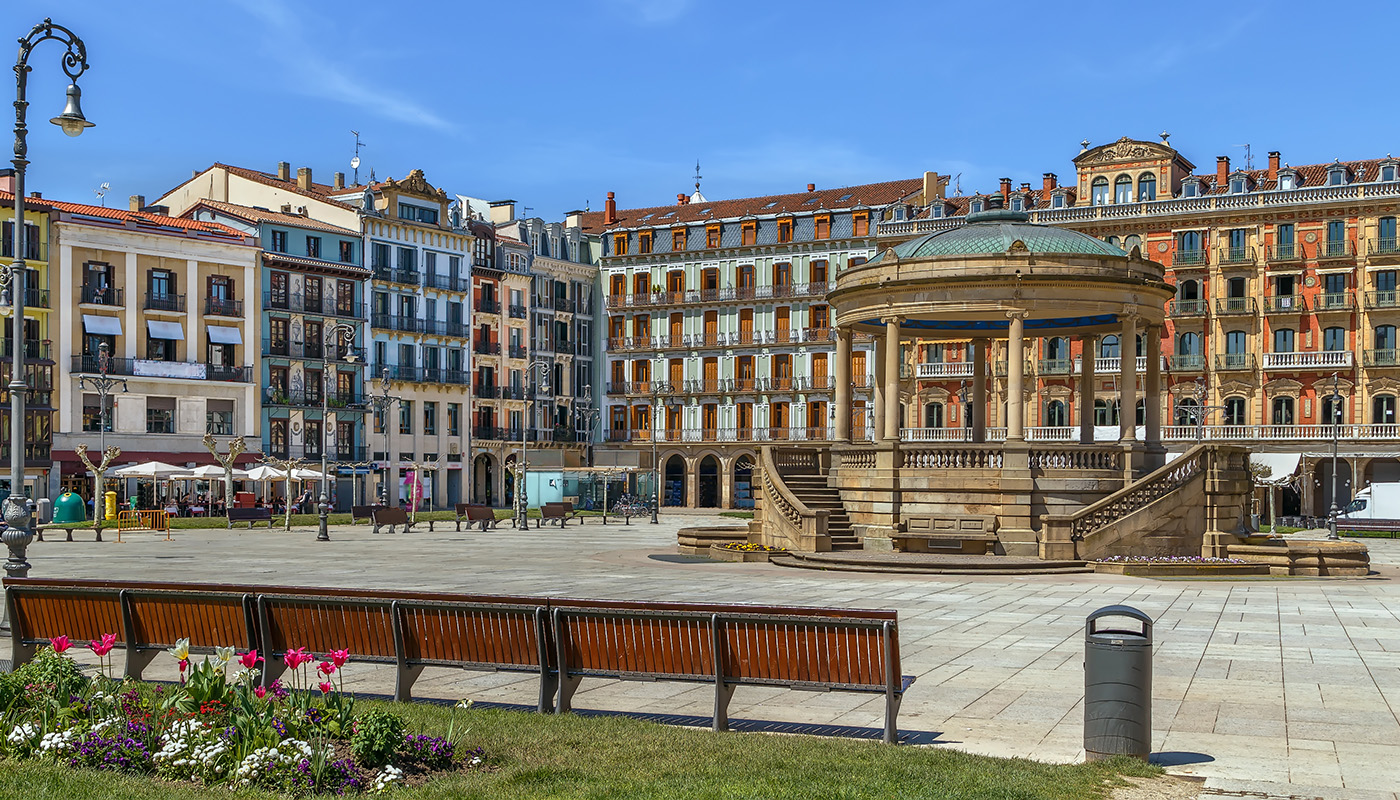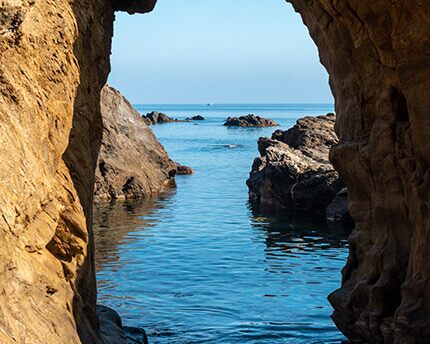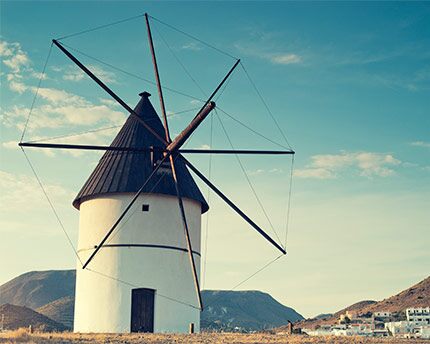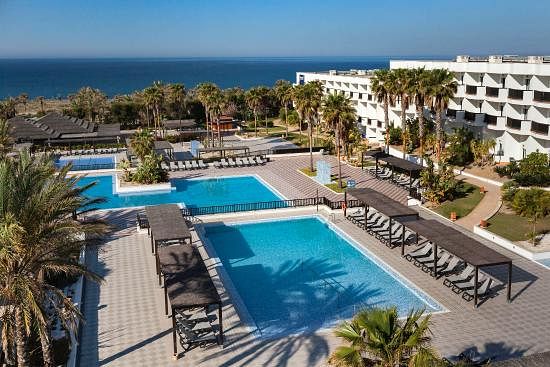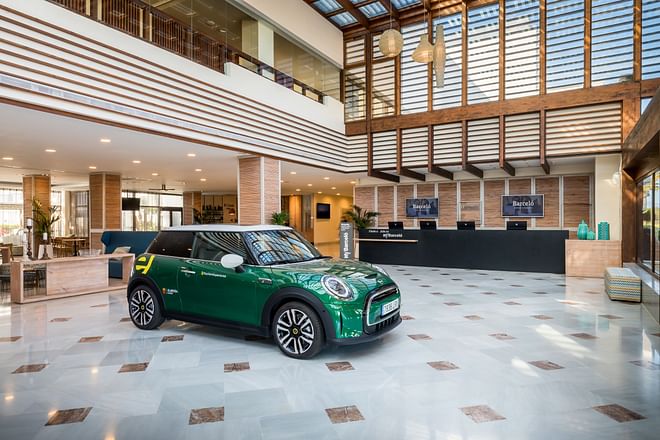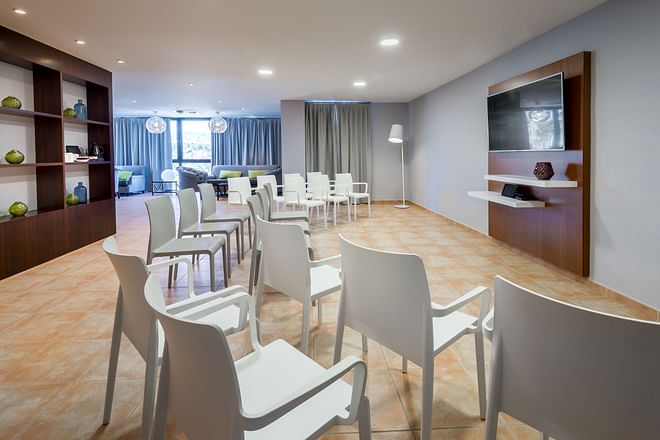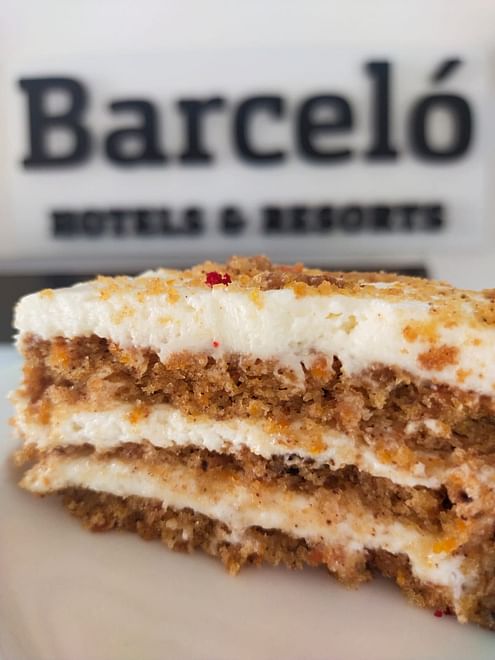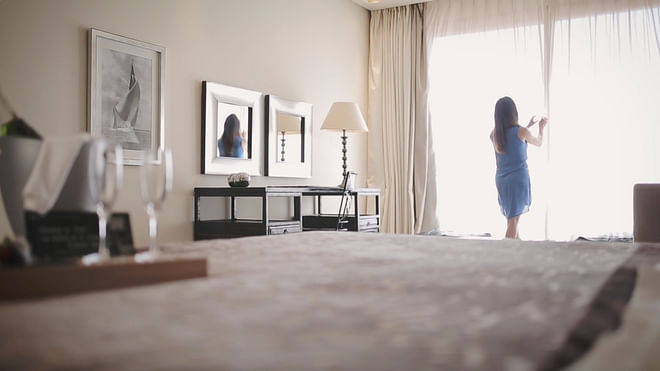Mojácar is, without doubt, one of the most beautiful towns in Almería and it is certainly one of the best-preserved natural and historical heritage sites in the region. This and the rich traditions that continue to be celebrated today make for plenty to see in Mojácar, whether you take a trip from Almería capital or decide to make Mojácar your home for the holidays.
No matter how long you decide to stay in Mojácar, one thing will stand out above the rest: its relationship with the Mediterranean Sea. Mojácar is surrounded by some of the best beaches in the entire province, with El Playazo beach in neighbouring Vera standing out as exceptional amongst a stellar bunch.
El Playazo, a spectacular cove
El Playazo beach is one of the most spectacular beaches in the province of Almería. Its warm sands stretch out for some six kilometres and boast an average of 50 metres of sunbathing area all the way along. It has all the amenities of a more touristic beach while being tucked away some 15 kilometres from Mojácar.
What has made this beach most famous in recent years is its status as one of the main naturist centres in all of Europe, even though the nudist area only occupies two kilometres of the beach in total. What is impressive is the fact that the residential areas, beach bars, restaurants and other touristic establishments that flank these two kilometres practice complete nudism throughout.
Mojácar’s seaside promenade
One of the most bustling areas to visit in Mojácar, especially in summer, is the seaside promenade. Measuring just over three kilometres, the promenade skirts the coast among shade-giving palm trees, and it is flanked by numerous restaurants, beach bars, supermarkets, clothes shops and places to buy souvenirs. This entire pedestrianised area is very popular with cyclists and joggers as it benefits from the cool sea breeze. Whatever your activity level, you won’t be disappointed by the gorgeous views of the Mediterranean.
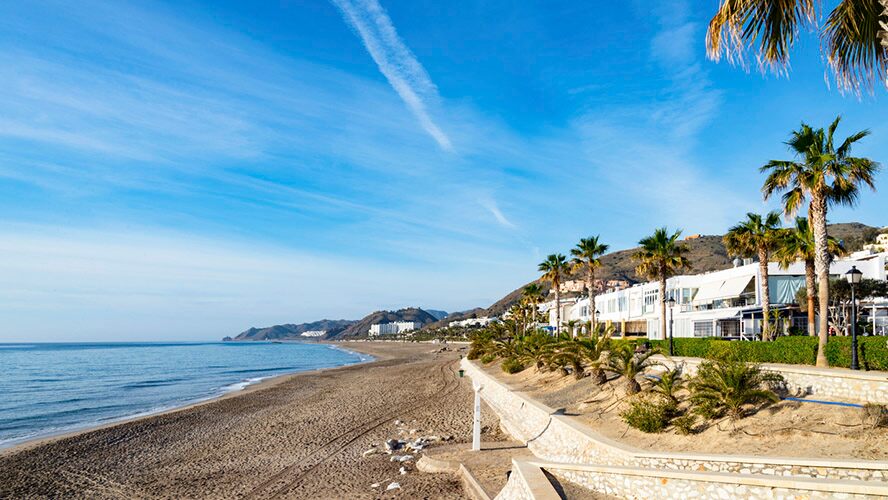
Here are some of the best restaurants on the promenade:
- Torre Bahía (Calle Torrebahía, 3) offers a fantastic selection of grilled meats but it would be a sin to pass up the chance to sample some of the fresh fish caught just metres away in the Mediterranean.
- Casa Egea (Paseo del Mediterráneo, 127) is a perfect example of a traditional Mediterranean restaurant without any sign of pretension, which means people have been returning year after year since its opening in 1992.
- Mohana Mojácar (Paseo del Mediterráneo, 28) is one of the best places to have chargrilled meats in Mojácar. Aside from the grill, there is also a varied menu of both local and international cuisine to please all palates.
Parterre Square
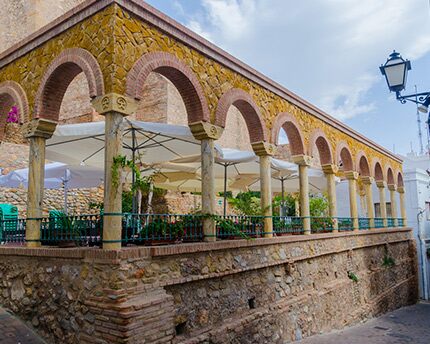
Plaza del Parterre, or Parterre Square, is one of the most obvious remnants of the Moorish occupation of this area that lasted for over seven centuries. ‘Parterre’ actually means ‘flowerbed’ and this will give the reader an idea of why it is one of the most enchanting places to visit in Mojácar.
Archaeologists have discovered that this stunningly porticoed area next to the town’s main church was once a Moorish necropolis. Several sepulchres that face towards the east, towards Mecca, have been found in the undersoil of the square.
For a long time, now the square has been a local favourite thanks to its terrace, but even this offers a nod to history since, in one corner, there is a reproduction of part of the chorus pews from Toledo Cathedral, signed by the artist Itziar Ortuzar, which is meant to act as a reminder of the so-called ‘Reconquest’ of the peninsula by Christian forces.
The Mojácar spring
Also known as the ‘13 pipes’ for the number of taps from which flows clean, natural spring-water, the Public Spring of Mojácar is a white marble building that has been in use at least since the time of the Moorish occupation of the city. This absolute ‘must-see’ in Mojácar has undergone various renovations over the years which have transformed it from its humble origins, the last of which took place during the 80s and resulted in the pretty marble edifice you can see today. 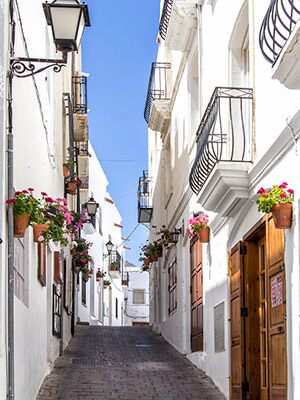
According to tradition, it was here that Garcilaso de la Vega, envoy to the Catholic Monarchs during their ‘Reconquest’, met the governor of Moorish Mojácar to receive his peaceful surrender of the town. Today, this square is filled with the sound of trickling water and is surrounded by plant pots hanging from the walls, making it one of the prettiest places to visit in the town.
What else to see in Mojácar
The historic centre of Mojácar is brimming with signs of its Moorish past, and many of these places have been adorned with impressive monuments over the years. Here are a handful of things to visit which represent that heritage:
-
Santa María Church
Built upon the remains of the original mosque at the end of the 16th century, the sober architecture of its façade was an innovation at the time.
-
Macenas Tower
One of the many watchtowers that dot the Mediterranean coast of Spain, this was built towards the end of the 18th century and still
watches the sea today. A stone’s throw from the equally impressive Perulico Tower, the two are connected by a pretty coastal path that is worth a visit too.
-
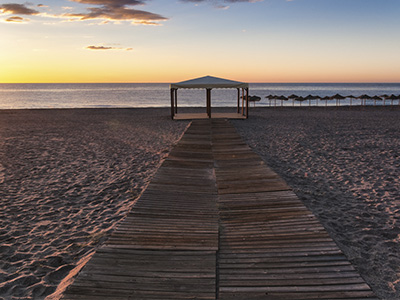 The Moors and Christians Festival
The Moors and Christians Festival
This is, by far, the favourite festival of the locals. Celebrated every year at the weekend closest to the 10th June, this festival commemorates the Moorish surrender of the town to the troops of the Catholic Monarchs in 1488. Visitors come yearly to marvel at the colourful parades that march through the main streets of the town.
-
The beaches of Mojácar
Mojácar has a total of 17 kilometres of coast and boasts such gems as the beaches of Cala de Granatilla, Marina de la Torre, El Descargador and the Venta del Bancal, among others.
























































